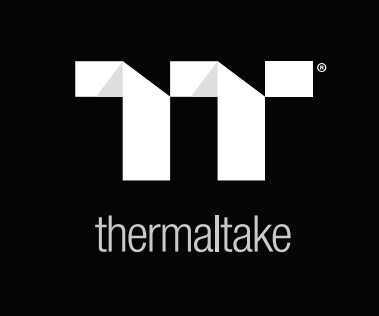Recent Article
รีวิว DEEPCOOL CH170 PLUS | เคสเกือบจิ๋ว..
03 Dec 2025 20:08
รีวิวเคส HYTE X50 | เคสโมเดิร์นสุดโค้งมน
01 Dec 2025 20:00
รีวิว DEEPCOOL CH170 PLUS | เคสเกือบจิ๋วตั้งโชว์บนโต๊ะสบายๆ
03 Dec 2025 20:08
03 Dec 2025 20:08
รีวิวเคส HYTE X50 | เคสโมเดิร์นสุดโค้งมน
01 Dec 2025 20:00
01 Dec 2025 20:00
Tech Zone
POCO F8 Ultra สมาร์ทโฟนรุ่นแรกที่มาพร้อม Snapdragon 8 Elite Gen 5 ก้าวกระโดดครั้งใหญ่ของ POCO สู่สมรภูมิ เรือธงระดับพรีเมียม
มาพร้อม ชิปแยกสำหรับจอภาพ, เลนส์ซูมแบบ Periscope, หน้าจอ HyperRGB AMOLED, ระบบเสียงร่วมพัฒนาโดย Bose และ ฝาหลังลายผ้ายีนส์ กำหนดมาตรฐานใหม่ของสมาร์ทโฟนเรือธงไปอีกขั้น
26 Nov 2025
ดีไซน์ของ POCO F8 Pro สวยเหนือจริง—บอดี้ขึ้นรูปชิ้นเดียว งดงามจนแทบไม่อยากเชื่อ
POCO กลับใส่ชิป Snapdragon 8 Elite Gen 5 ลงใน F8 Pro ตั้งแต่แรก ทำให้เป็นแฟลกชิปที่ผลิตจำนวนมากรุ่นแรกของโลกที่มาพร้อมแพลตฟอร์ม Qualcomm รุ่นใหม่ล่าสุด
26 Nov 2025
รีวิว ASUS VivoWatch 6 AERO สมาร์ตแบนด์ที่เข้าใจร่างกายลึกกว่าใคร
ถ้าคุณเป็นสายเทคโนโลยีที่ออกกำลังกายจริงจัง และอยากเข้าใจร่างกายตัวเองในมุมที่สมาร์ตแบนด์ทั่วไปยังทำไม่ได้ — VivoWatch 6 AERO คือคำตอบที่ใกล้คำว่า ‘สมบูรณ์แบบ’ ที่สุดของ ASUS ในตอนนี้
26 Nov 2025
Recent Article
รวม 7 ไอเทมชาร์จน่าใช้! VOLTME 2025
24 Oct 2025 13:01
POCO F8 Ultra สมาร์ทโฟนรุ่นแรกที่มาพร้อม..
26 Nov 2025 08:00
รีวิว ROG XBOX ALLY X การอัพเกรดใหม่ที่ต..
18 Oct 2025 22:54
รีวิว HP OMEN 16 (16-ao0125AX) | เกมมิงโ..
28 Oct 2025 20:00
พัฒนาการของ USB Audio และ USB-C
18 Nov 2025 00:38
POCO F8 Ultra สมาร์ทโฟนรุ่นแรกที่มาพร้อม..
26 Nov 2025 08:00
ดีไซน์ของ POCO F8 Pro สวยเหนือจริง—บอดี้..
25 Nov 2025 08:00
นี่มัน POCO จริงเหรอ? กล้องของ F8 Series..
19 Nov 2025 10:00
Recent Article
รีวิว ROG Falchion RX Low Profile | คีย์..
02 Oct 2025 20:00
ROG XBOX ALLY X เครื่องเล่นเกมพกพาใหม่จา..
18 Oct 2025 22:34
ROG XBOX ALLY X เครื่องเล่นเกมพกพาใหม่จา..
18 Oct 2025 22:34
รีวิว ROG Falchion RX Low Profile | คีย์..
02 Oct 2025 20:00
รีวิว ROG Azoth X อัพเกรดมาใหม่ น่าสนใจแ..
01 Aug 2025 20:00
รีวิว Asus KERIS II ORIGIN เม้าส์ที่เปลี..
24 Jul 2025 20:00
รีวิว ROG Pelta : หูฟัง ไร้สาย ดีเลย์ต่ำ..
20 Apr 2025 20:00
รีวิว ROG Delta II : หูฟัง Gaming ฟีเจอร..
14 Mar 2025 20:00
Recent Article
Jitter คืออะไร ส่งผลต่อเสียงได้อย่างไร?
01 Dec 2025 08:05
บทสรุป ของสาย Digital Audio Connection
24 Nov 2025 21:08
OS/2 ระบบปฏิบัติการในฝันที่ Microsoft แล..
01 Dec 2025 08:00
พัฒนาการของ USB Audio และ USB-C
18 Nov 2025 00:38
รู้จักสาย Optical (TOSLINK) อย่างลึกซึ้ง
09 Nov 2025 22:21
intel กลับมาอีกครั้ง
25 Oct 2025 20:30
ความแตกต่าง ของ Class Power Amplifire
11 Dec 2025 01:20
Jitter คืออะไร ส่งผลต่อเสียงได้อย่างไร?
01 Dec 2025 08:05
OS/2 ระบบปฏิบัติการในฝันที่ Microsoft แล..
01 Dec 2025 08:00
NVIDIA Powers the World’s AI. And Yours..
29 Nov 2025 07:26
บทสรุป ของสาย Digital Audio Connection
24 Nov 2025 21:08
พัฒนาการของ USB Audio และ USB-C
18 Nov 2025 00:38
PR NEWS

NTT DATA เปิดตัวศูนย์ป้องกันภัยไซเบอร์ขับเคลื่อนด้วย AI ใหม่ 6 แห่ง ยกระดับความปลอดภัยไซเบอร์ รับมือภัยคุกคามยุค AI รองรับภูมิภาคเอเชียตะวันออกเฉียงใต้ รวมถึงประเทศไทย
09 Dec 2025

เอเซอร์และอินเทล จัดการแข่งขัน “Thailand Predator League 2026” รอบ Finals โดย FULL SENSE ได้แชมป์เป็นทีมตัวแทนประเทศไทยไปแข่งขันบนเวทีโลก Asia Pacific Predator League 2026 ที่ประเทศอินเดีย ชิงเงินรางวัลรวมกว่า 14 ล้านบาท
09 Dec 2025

เอ็มจี ดูแลลูกค้าผู้ประสบอุทกภัยภาคใต้ ด้วยส่วนลดอะไหล่สูงสุด 30% ฟรีค่าแรงซ่อมบำรุงและเปลี่ยนอะไหล่ พร้อมสนับสนุนช่วยเหลือภายใต้โครงการ TOGETHER FOR BETTER THAILAND
08 Dec 2025















